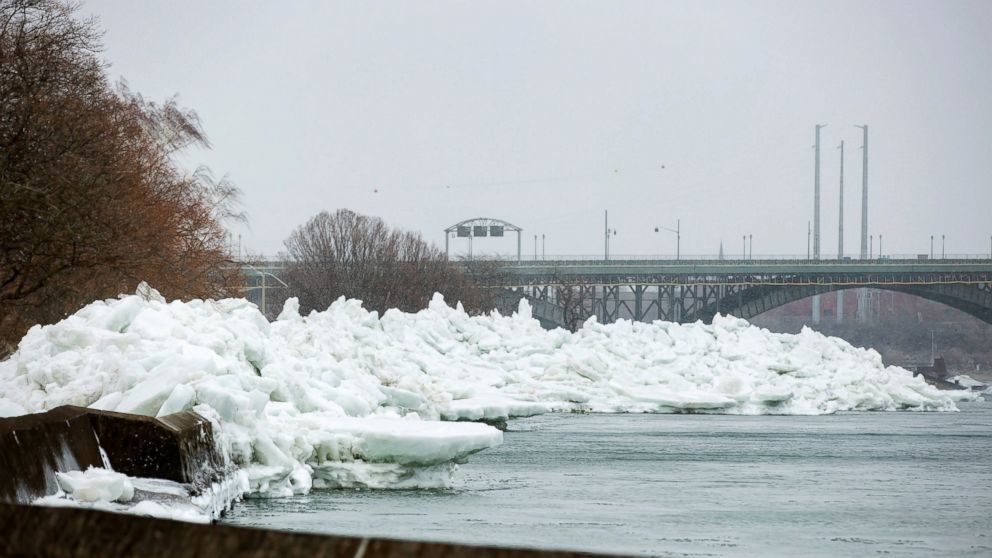
At midday, nearly 80 million people were under high-wind warnings or advisories across parts of 14 states, according to the National Weather Service. At least 1,200 flights were canceled Monday, according to FlightAware.
Wind gusts of up to 81 mph were reported from the storm, toppling trees and power lines. Giant chunks of ice spilled over the banks of the Niagara River across from Buffalo on Sunday, creating bizarre, 30-foot-tall ice mounds. At one point early Monday, 650,000 were without power.
The storm was the same system that earlier had brought snow to Los Angeles and Las Vegas, record snow to Flagstaff, Arizona, a blizzard and bitter cold to the upper Midwest and floods and deadly tornadoes in the South. It is called a bomb cyclone because it rapidly intensified after a dramatic drop in atmospheric pressure.
Over the weekend, a woman was killed when a tornado hit Mississippi, and a man died when he drove into floodwaters in Tennessee, officials said.
Knoxville was among the hardest hit cities in Tennessee when a record-setting amount of rain and devastating floods swamped the state. "There were no areas of Knoxville that weren't affected," Knox County Commissioner Larsen Jay said.
A landslide also closed a key highway between Clarksville and Nashville for at least the next week.
In northern Alabama, residents used boats Monday to reach flooded-out neighborhoods; crews searched for two people believed to be missing on waterways; and schools were shut down after days of torrential rains.
Two Alabama towns near Birmingham imposed curfews Monday because of flooding.
In Columbus, Mississippi, residents continued to recover from an EF3 tornado Saturday that smashed into a commercial district in the city, located about 130 miles northeast of Jackson. One person was killed; a dozen others sustained injuries.
The north-central U.S. also dug out Monday from a blizzard that dumped heavy snow across Minnesota, Wisconsin and Michigan.
A whiteout near Neenah, Wisconsin, on Sunday led to a 130-car pileup that killed one person and injured 71 others. "I've been in the law enforcement business - this is my 27th year," Winnebago County Deputy Todd Christopherson said. "... That was the worst conditions I've ever seen."
The winter has been relentless all month in the region: The 45 inches of snow that's fallen in Eau Claire, Wisconsin, makes February 2019 the city's snowiest month on record.
In the northern Plains on Monday, brutal cold was the story: In Cando, North Dakota, the temperature was 33 degrees below zero with wind chills of 48 below, WeatherBug reported.
The wind chill dipped to 20 below zero in winter-weary Minneapolis.
Late last week, as the storm moved across the Southwest, rare snow fell in both Los Angeles and Las Vegas. In Flagstaff, 35.9 inches fell on Thursday alone, the city's all-time snowiest day on record, the weather service said.
Yet another storm barreled into the West on Monday, bringing heavy rain and snow to Washington, Oregon, northern California and Idaho. Up to 3 inches was forecast for Portland, Oregon, leading to school closures and delays Monday.
In California, the weather service predicted Mount Shasta would pick up 7-11 feet of snow by Wednesday night.
Contributing: The Knoxville News-Sentinel; The Green Bay Press-Gazette, The (Clarksville, Tenn.) Leaf-Chronicle; The (Salem) Statesman-Journal, The Associated Press



Reader Comments
to our Newsletter